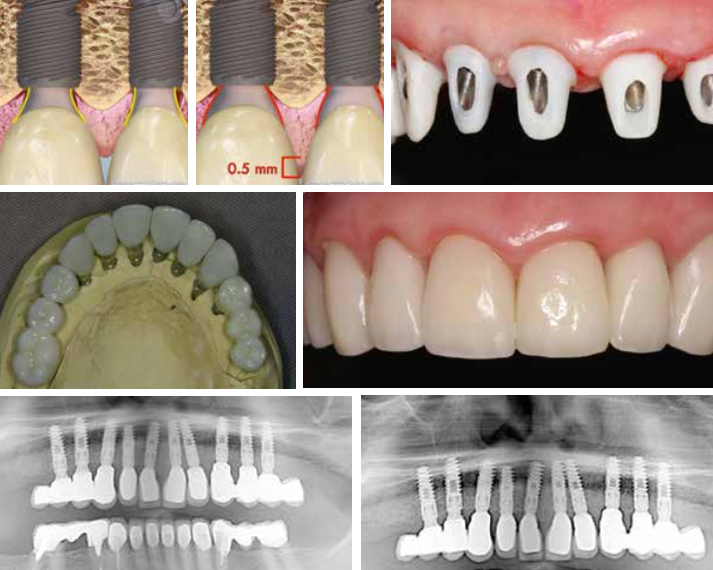EL Clinical Study – April 2015 – Bone stability and aesthetics using an innovative implant design
EL Clinical Study • April 2015
Bone stability and aesthetics using an innovative implant design
Treatment of a 65-year-old patient by DR HENRIETTE LERNER (HL DENTCLINIC), BADEN-BADEN, GERMANY
Implant success today consists of more than just “osseointegration accomplished”. We also have to take into account the aesthetic result. The present clinical case with high aesthetic patient expectations illustrates the treatment of a partially edentulous 65-year-old female patient with grade 2 mobility in all teeth.
The Morse-tapered conical connection has been shown to be the most stable connection available at this time.
There is scientific evidence that micro-movements rather than the size of the microgap are the reason for bone loss. In a Morse-tapered conical connection, the internal line angle between the implant and the connector is less than 0.25 degrees. The microgap is smaller (1.1–1.5 μm) than a bacterium (2–6 μm) [2].
Therefore, this connection is the most stable connection currently known and associated with the lowest incidence of screw loosening (0.37 per cent).
Discussion and conclusion
This case study uses an innovative implantological and prosthetic concept that allows the creation and stabilization of the peri-implant bone and gingival complex. Relevant scores were recorded for up to two years, yielding overall implant success rates near 100 per cent (99.7 per cent).

